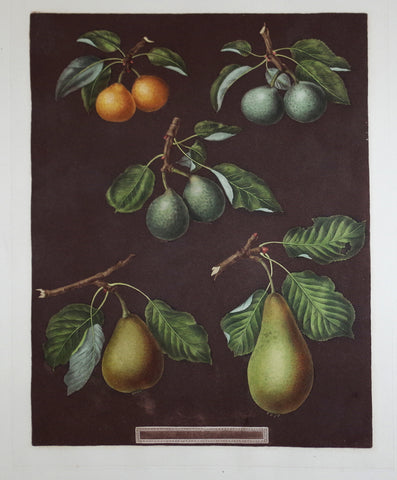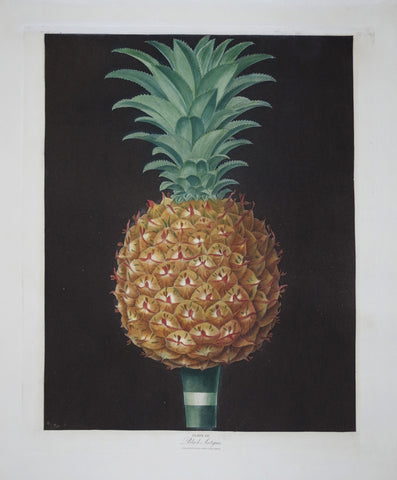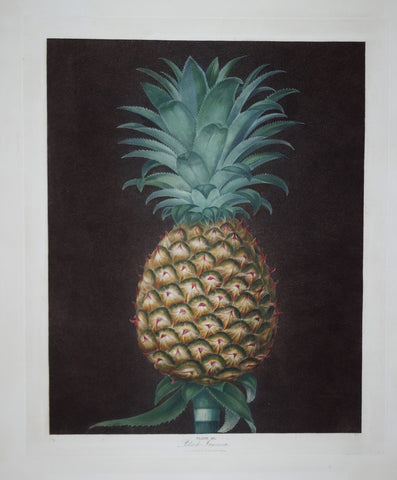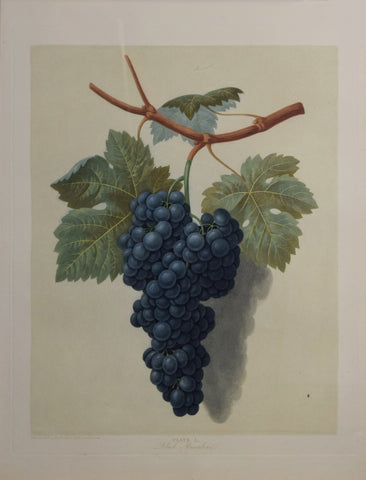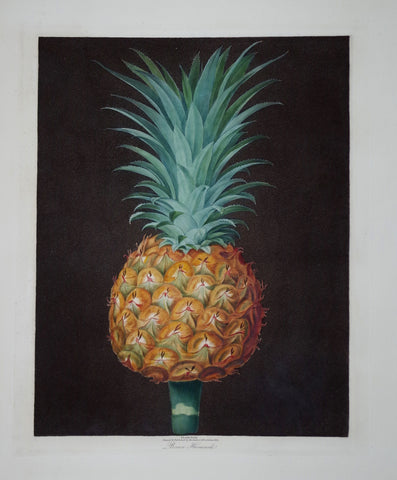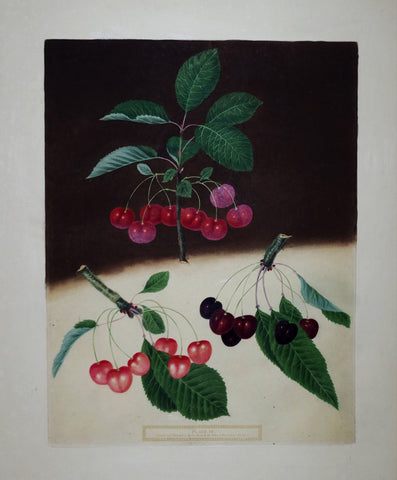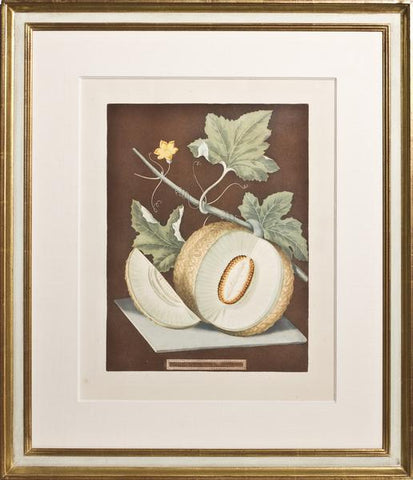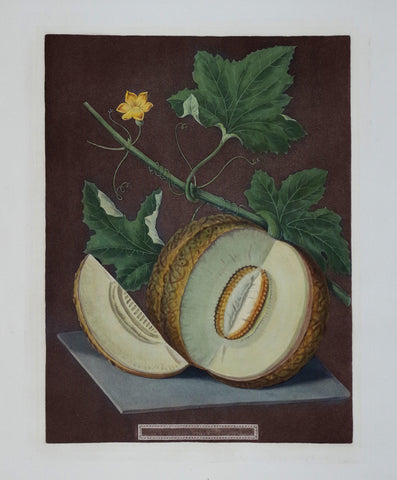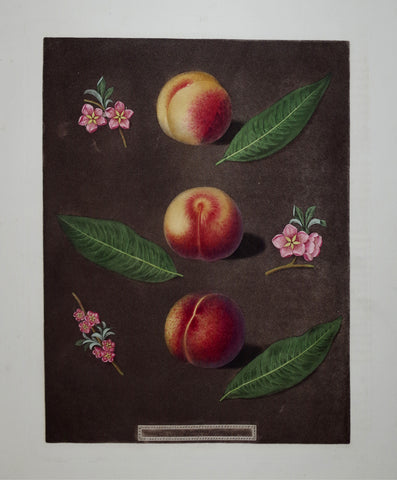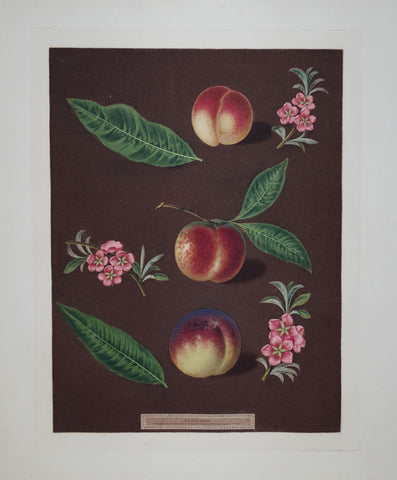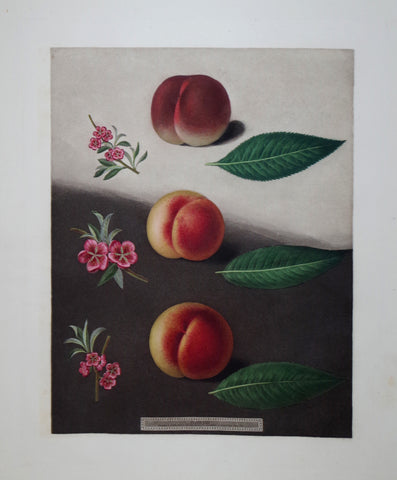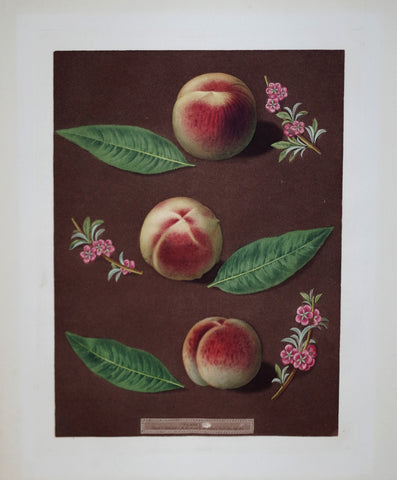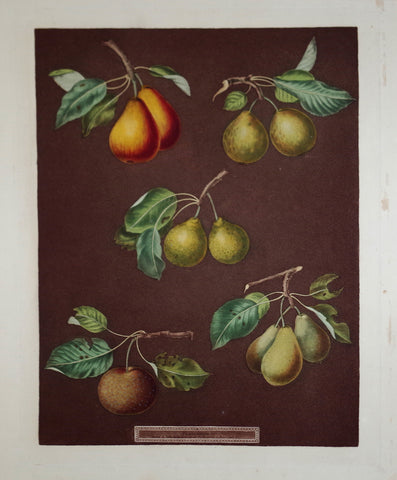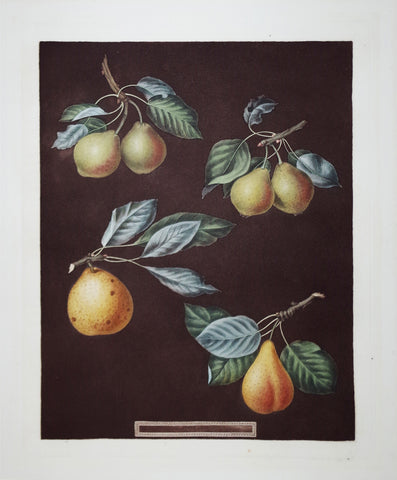Search By Artist
George Brookshaw (1751-1823)
Pomona Britannicaa
London, 1804-1812
Engravings with original hand-coloring
Characterized by the highest standards of production and artistic quality, the superb illustrations that Brookshaw drew and engraved for the "Pomona" remain perhaps the most sumptuous and distinctive of the early 19th century. This magnificent and stylistically unique work took Brookshaw nearly ten years to produce. Rivaled only by Dr. Robert Thornton's "Temple of Flora," Brookshaw's 'Pomona' is considered to be the finest British botanical work from a time when England dominated the field with a very large number of great books. Brookshaw's fine illustrations make excellent use of the rich, modulated tones that the aquatint process creates. The elegantly arranged and richly colored fruits emerge from deep brown backgrounds or float on a softly mottled light ground, creating a presence unlike that of any other botanical illustrations. Brookshaw asserts in the preface that the "Pomona Britannica" was an enduring work created for the enjoyment and edification of "succeeding generations."

